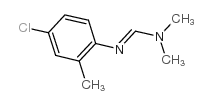Postembryonic development of centrally generated flight motor patterns in the hawkmoth, Manduca sexta.
Ricardo Vierk, Carsten Duch, Hans-Joachim Pflüger
文献索引:J. Comp. Physiol. A. Neuroethol. Sens. Neural. Behav. Physiol. 196(1) , 37-50, (2010)
全文:HTML全文
摘要
This study analyses the maturation of centrally generated flight motor patterns during metamorphosis of Manduca sexta. Bath application of the octopamine agonist chlordimeform to the isolated central nervous system of adult moths reliably induces fictive flight patterns in wing depressor and elevator motoneurons. Pattern maturation is investigated by chlordimeform application at different developmental stages. Chlordimeform also induces motor patterns in larval ganglia, which differ from fictive flight, indicating that in larvae and adults, octopamine affects different networks. First changes in motoneuron activity occur at the pupal stage P10. Rhythmic motor output is induced in depressor, but not in elevator motoneurons at P12. Adult-like fictive flight activity in motoneurons is observed at P16 and increases in speed and precision until emergence 2 days later. Pharmacological block of chloride channels with picrotoxin also induces fictive flight in adults, suggesting that the pattern-generating network can be activated by the removal of inhibition, and that proper network function does not rely on GABA(A) receptors. Our results suggest that the flight pattern-generating network becomes gradually established between P12 and P16, and is further refined until adulthood. These findings are discussed in the context of known physiological and structural CNS development during Manduca metamorphosis.
相关化合物
| 结构式 | 名称/CAS号 | 分子式 | 全部文献 |
|---|---|---|---|
 |
杀虫脒
CAS:6164-98-3 |
C10H13ClN2 |
|
Identification of the binding site for a low-molecular-weigh...
1998-02-03 [Biochemistry 37(5) , 1227-34, (1998)] |
|
Interaction of formamidine pesticides with the presynaptic a...
2001-05-01 [Toxicol. Appl. Pharmacol. 172(3) , 179-85, (2001)] |
|
Influence of the formamidine pesticide chlordimeform on ovul...
1993-08-01 [Toxicol. Appl. Pharmacol. 121(2) , 279-90, (1993)] |
|
Synergistic actions of formamidine insecticides on the activ...
2012-11-01 [J. Med. Entomol. 49(6) , 1405-10, (2012)] |
|
Genotoxicity of 4-chloro-o-toluidine in Salmonella typhimuri...
1996-08-01 [Mutat. Res. 370(1) , 39-47, (1996)] |